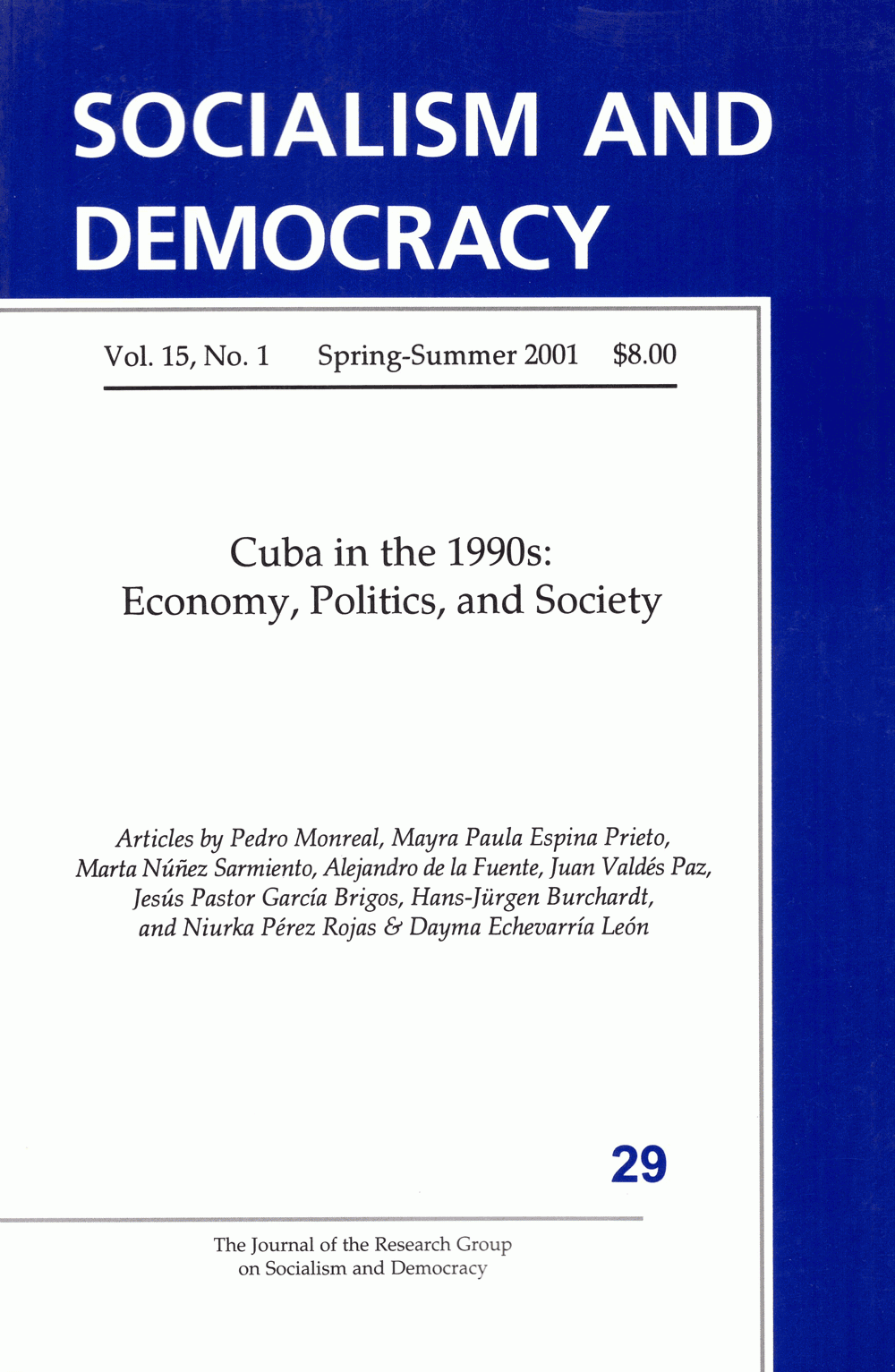#29 - Spring-Summer 2001

This special issue on Cuba stems from Socialism and Democracy's fifteen-year history of theoretical and practical concern with the interrelated fortunes of socialism and democracy in the contempor- ary world. Because Cuba occupies such...
Section I: Economy and Society
Every Cuban felt the effect of the economic crisis following the collapse of the Eastern socialist bloc and the suspension of CMEA (socialist bloc common market) trading agreements. From 1990 to 1993, according to official statistics,...
Cuba’s economic reform is one of the few experiments in socioeconomic change that currently defines itself as an alternative to neoliberal transformation that nearly exclusive and all-encompassing formula for structural readjustment to...
Contemporary dilemmas in Cuba: an introduction
Although usually presented in stilted academic discourse or strident ideological rhetoric, most debates about contemporary Cuba are in fact born from basic tensions...
This article summarizes the results of a case study I recently concluded with women professionals and technicians in Cuba during the crisis of the 1990s; it is part of a larger study on Cuban women and employment. I intend to argue that...
“Race,” an Afro-Cuban-American businessman wrote in the Miami press not long ago, “is at the heart of Cuba’s crisis.” Although statements like this are not unheard-of, most analyses of the Cuban transition or the so-called “special...
I am not claiming that our country is a perfect model of equality and justice. We believed at the beginning that when we established the fullest equality before the law and complete intolerance for any demonstration of sexual...
Section II. Government
The Cuban system of representative government, known as the Organs of People's Power (Órganos del Poder Popular or OPP), operates at three levels: the National Assembly, the provincial assemblies, and the municipal assemblies. The...
Looking at trends characterizing the century’s end, we can see that a new capitalist world order is emerging, clearly more unequal, more exclusionary, and more unstable than the postwar order. The traditional polarization of cold war...
The municipal, provincial and national assemblies of People’s Power constituted in 1976 replaced the provisional institutions of government that had operated during the first years of socialist construction in Cuba. These Organs of...
We do have a National Assembly "even though many people are unaware of it" characterized by a democratic spirit that fills us with pride because it is the neighbors who put up the candidates, nominate them for delegates of their...
Section III: The Agrarian Sector
Cuba's agrarian reform of 1993-a result of change subsequent to the collapse of the Socialist Bloc-may turn out to be the most far-reaching since the first agrarian reform of 1959. The two articles in this section study this process and...
One of the twenty-first century’s main challenges for some Latin American countries will be solving the agrarian problem. Cuba is facing this challenge by implementing an unprecedented reform. In 1993, almost all state agriculture was...
Transformations in Cuba during the 1990s have been analyzed by numerous specialists. Among the changes in the agrarian sector, one of the most important was the creation of the Basic Units of Cooperative Production (UBPCs) in September...